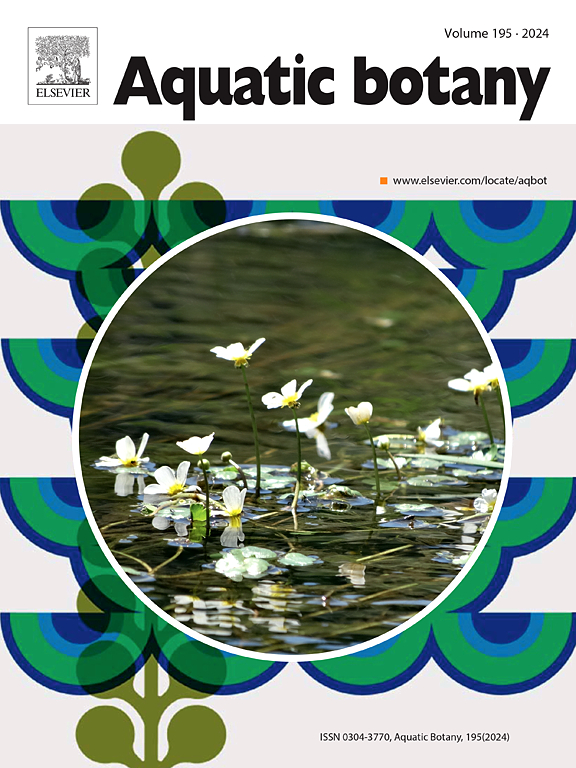Morphotaxonomic, phylogenetic and phytochemical study of the invasive, green-tide-forming macroalga Ulva tepida (Chlorophyta) firstly recorded from the African-Mediterranean coastal waters
IF 2.6
4区 生物学
Q2 MARINE & FRESHWATER BIOLOGY
引用次数: 0
Abstract
As a part of our extensive survey on macroalgal distribution along the Egyptian-Mediterranean coasts, a green-tide-forming filamentous Ulva was collected from Alexandria city, and identified as Ulva tepida by a combined integrative approach, including a multilocus sequence dataset of the chloroplast–encoded rbcL gene, the nuclear–encoded SSU rRNA gene and internal transcribed spacer (ITS), and state-of-the-art morphotaxonomy. The species features are consistent with the original description, i.e. tube-like thalli with radial branching in the basal region, chloroplasts covering the outer cell wall, and 1–5 pyrenoids. Biochemical assessment (primary metabolites) showed that the species is rich of carbohydrates, proteins, lipids, phenolics, and flavonoids. Additionally, it has high antioxidant activity and DPPH˙ (2,2-diphenyl-1-picrylhydrazyl) scavenging % value. The fatty acid profile, characterized by gas chromatography–mass spectrometry (GC-MS), revealed high concentrations of palmitic (C16:0) and oleic (C18:1, ω–9) fatty acids (30 % and 24 %, respectively), pointing to the biodiesel-production potential of this species. This is the first record of U. tepida, likely originated from the Indo-Pacific, from the African-Mediterranean coastal waters. Stricter regulations and regular water-quality monitoring, particularly in areas exposed to strong nutrient inputs, are required for this green-tide-forming species. Rapid biological invasions and climate change will significantly alter the native Mediterranean-Sea algal flora, and we believe that U. tepida will be reported as an alien invasive species in other Mediterranean countries.
非洲-地中海沿岸首次记录的绿潮大型入侵藻类温水藻(Ulva tepida)的形态分类、系统发育和植物化学研究
作为我们对埃及-地中海沿岸大型藻类分布的广泛调查的一部分,我们从亚历山大市收集了一种形成绿潮的丝状Ulva,并通过综合方法鉴定为Ulva tepida,包括叶绿体编码的rbcL基因、核编码的SSU rRNA基因和内部转录间隔(ITS)的多位点序列数据集,以及最先进的形态分类学。物种特征与原描述一致,即管状体,基部呈放射状分支,叶绿体覆盖外细胞壁,有1-5个类核。生物化学评价(初级代谢物)表明,该物种富含碳水化合物、蛋白质、脂类、酚类物质和类黄酮。此外,它还具有较高的抗氧化活性和DPPH˙(2,2-二苯基-1-吡啶肼基)清除%值。脂肪酸谱经气相色谱-质谱(GC-MS)表征,发现棕榈酸(C16:0)和油酸(C18:1, ω-9)脂肪酸含量较高(分别为30 %和24 %),表明该物种具有生物柴油生产潜力。这是首次记录到的温式乌龙,可能起源于印度洋-太平洋,非洲-地中海沿岸水域。这种形成绿潮的物种需要更严格的法规和定期的水质监测,特别是在暴露于强营养投入的地区。快速的生物入侵和气候变化将极大地改变地中海的原生藻类区系,我们相信在其他地中海国家,温必达将被报道为外来入侵物种。
本文章由计算机程序翻译,如有差异,请以英文原文为准。
求助全文
约1分钟内获得全文
求助全文
来源期刊

Aquatic Botany
生物-海洋与淡水生物学
CiteScore
3.80
自引率
5.60%
发文量
70
审稿时长
6 months
期刊介绍:
Aquatic Botany offers a platform for papers relevant to a broad international readership on fundamental and applied aspects of marine and freshwater macroscopic plants in a context of ecology or environmental biology. This includes molecular, biochemical and physiological aspects of macroscopic aquatic plants as well as the classification, structure, function, dynamics and ecological interactions in plant-dominated aquatic communities and ecosystems. It is an outlet for papers dealing with research on the consequences of disturbance and stressors (e.g. environmental fluctuations and climate change, pollution, grazing and pathogens), use and management of aquatic plants (plant production and decomposition, commercial harvest, plant control) and the conservation of aquatic plant communities (breeding, transplantation and restoration). Specialized publications on certain rare taxa or papers on aquatic macroscopic plants from under-represented regions in the world can also find their place, subject to editor evaluation. Studies on fungi or microalgae will remain outside the scope of Aquatic Botany.
 求助内容:
求助内容: 应助结果提醒方式:
应助结果提醒方式:


